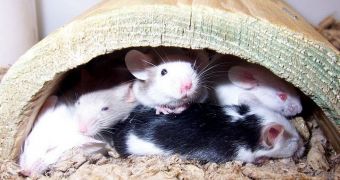All living things manage to survive due to the action of genes, tiny snippets of genetic information that encode proteins and other useful molecules. This is why knowing what each genes does is of vital importance. An innovation recently brought to this field of research will make things a lot easier.
Scientists in the United States managed to develop a new study method, that enables them to discover the function of a gene without having to kill the organisms the respective gene belongs to.
Until now, the only way of establishing what the function of a gene is was to inhibit its expression inside a living organism, and then watch what happened to it. But shutting down vital genes – before knowing they are vital – results in the death of the host organism.
As such, scientists have been looking for methods of establishing the functions of genes without lethal effects. Experts at the Cold Spring Harbor Laboratory (CSHL) recently managed to do just that, and demonstrated their new technique on unsuspecting lab mice.
The team used RNA interference (RNAi) technology to reach this result. Details of the work were published in the April 12 issue of the esteemed journal Proceedings of the National Academy of Sciences (PNAS).
In the paper, the experts detail one of their experiments. In it, a gene the mice needed for DNA replication was turned off via this new method, and was left shut down until the lab animals lost a lot of weight, and were about to die.
At this point, the experts turned the gene back on, and the mice were nursed back to health without a problem. Shutting down the gene and restoring its function was made possible by the use of molecules known as short hairpin-shaped RNA (shRNA).
Regulating gene activity in this manner “will not only help in pinpointing time frames during which essential genes are important during development, but will also be tremendously useful in cancer or other disease-related research,” explains Scott Lowe, PhD.
The expert holds an appointment as a professor at the CSHL, and is also an investigator with the Howard Hughes Medical Institute (HHMI). The expert co-led the research team with CSHL president and professor Bruce Stillman, PhD.
“We could, for example, first allow tumors to grow in mice, then shut off a gene that we think might be a good therapeutic target to test whether it saves the animals,” Lowe goes on to say.
“This ability to toggle gene activity at any stage is a major advance over other gene knockdown techniques that are not reversible,” Stillman adds.
“This approach in animal models is the closest genetic equivalent to treating human patients with a single dose of a small molecule-based therapy targeted at a particular gene,” he argues.
“So this system will be invaluable for testing novel therapeutic targets and evaluating their efficacy and side-effects,” the expert concludes. The new study was made possible by grants from the Don Monti Memorial Research Foundation and the US National Institutes of Health (NIH).

 14 DAY TRIAL //
14 DAY TRIAL //